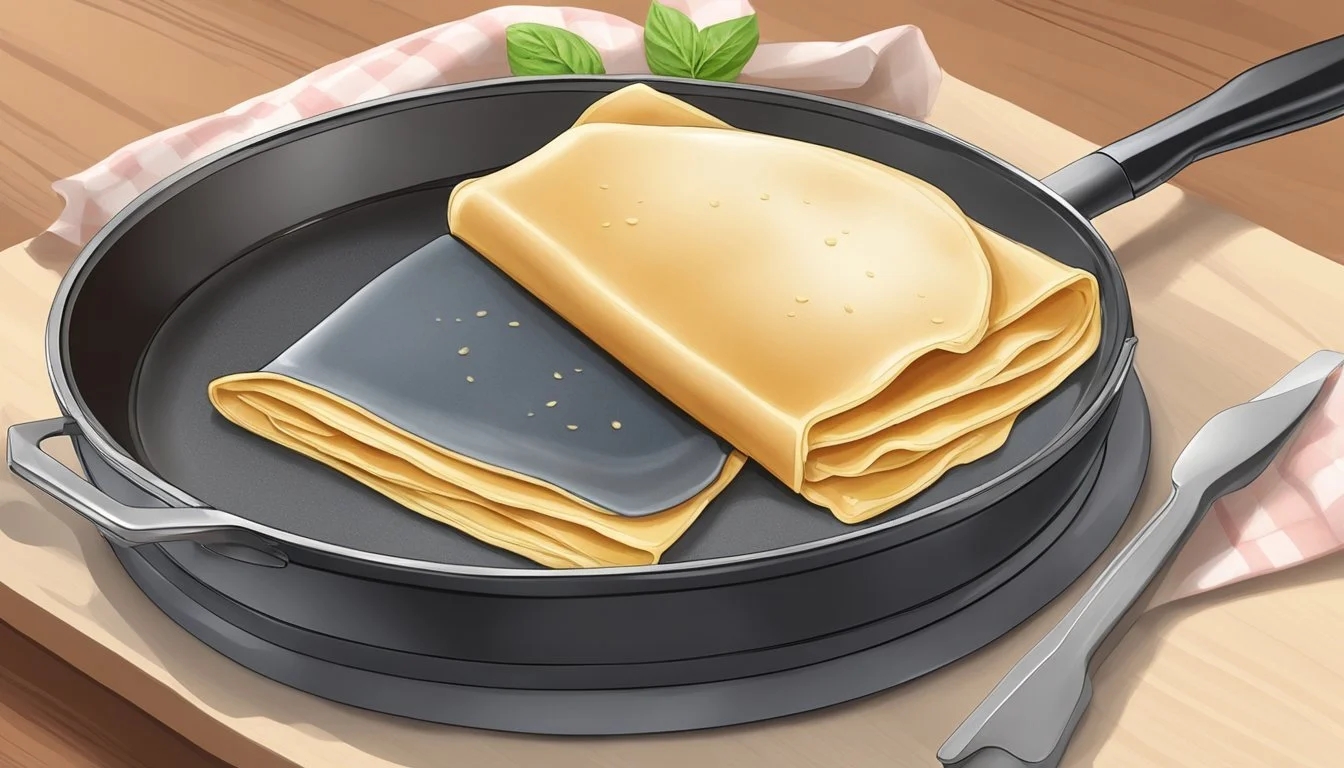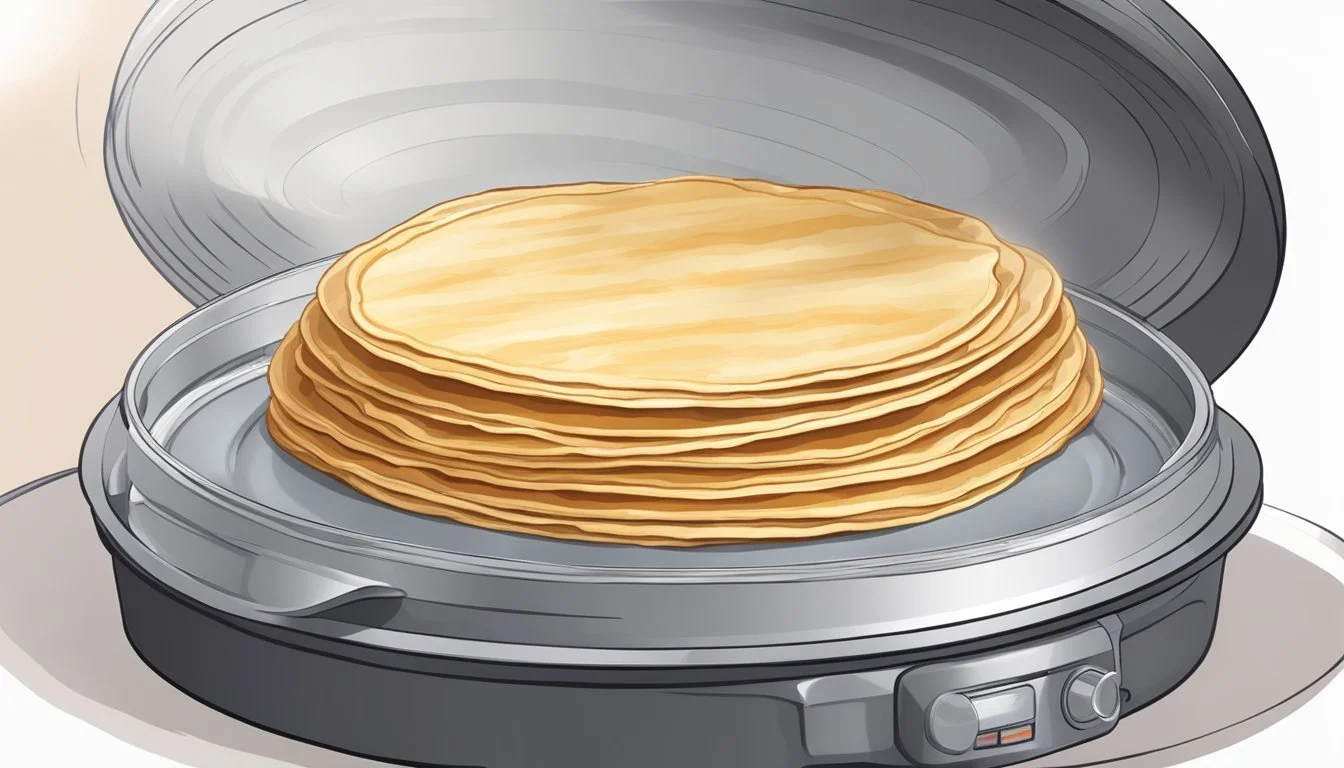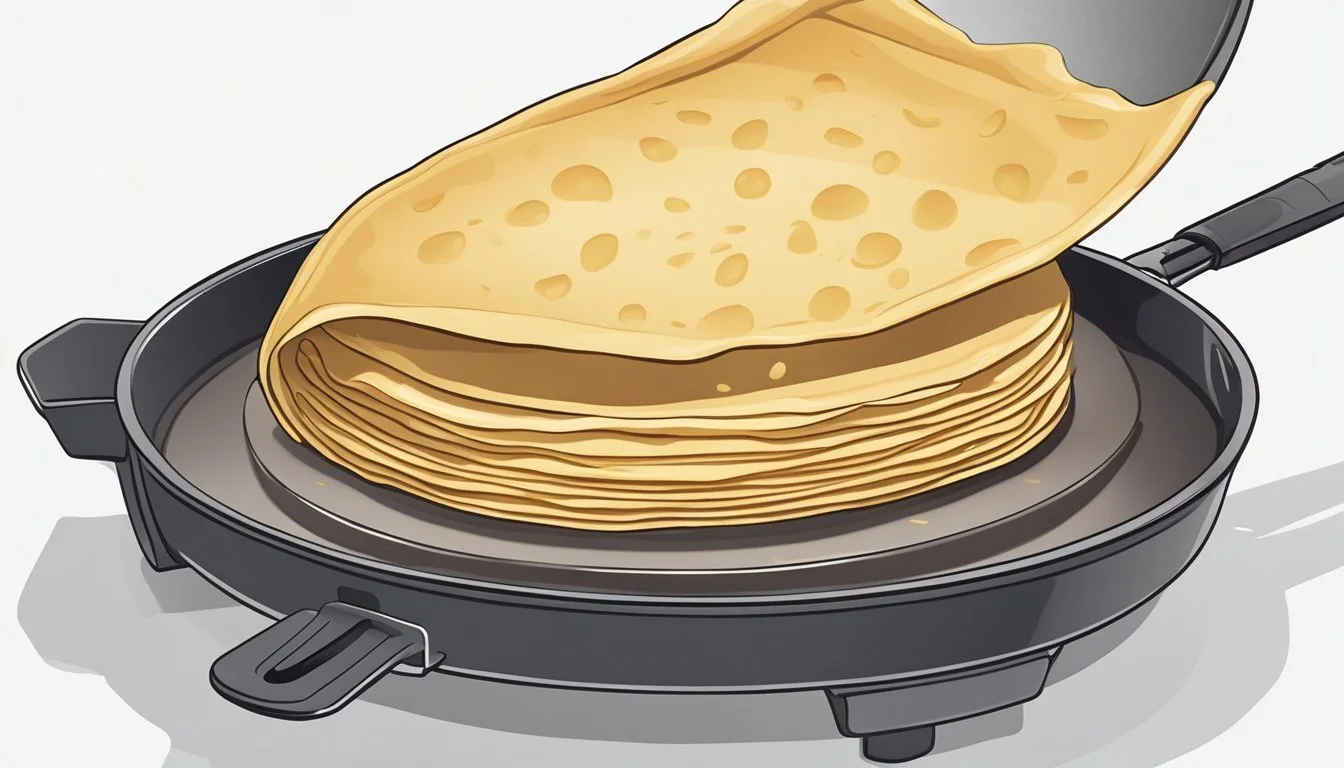Best Way to Reheat a Crepe
Tips for Preserving Its Delicate Texture
Crepes are a versatile and delightful dish that can be enjoyed sweet or savory, but their delicate texture can be a challenge to preserve when reheating. The key to warming up a crepe is to find a method that restores its gentle warmth and suppleness without compromising its slight crispiness. Whether served as a part of a gourmet breakfast, a sophisticated dessert, or a quick snack, ensuring that reheated crepes maintain their original quality is essential to savoring their unique culinary experience.
Several methods exist for reheating crepes, each with its own set of advantages. The use of an oven or a toaster oven is commonly recommended for achieving evenly warmed crepes with a touch of crispness. Meanwhile, a non-stick skillet on the stove can be used for a quick and controlled approach, allowing the crepe to regain heat gradually and evenly. An air fryer offers a modern solution that yields a slightly crisper texture, appealing to those who prefer a delicate crunch around the edges. Choosing the right method and understanding how to apply it effectively is crucial for preserving the integrity of the crepe.
Understanding Crepes
Crepes are a beloved French culinary staple, known for their paper-thin consistency and soft, pliable texture. Originating from the northwest region of France, they have gained worldwide popularity for their versatility in both sweet and savory dishes.
Composition
Crepes are made from a simple, liquid batter consisting of:
Flour
Eggs
Milk
Salt
Butter (usually melted)
The batter is ideally rested to allow the flour to absorb the liquid, resulting in a smoother consistency which contributes to the crepe's delicate texture.
Cooking Technique
Crepe batter is poured onto a hot non-stick surface, such as a crepe pan or skillet, and spread thinly to achieve an even, light texture. Cooks often aim for a slightly crisp edge with a tender center.
Varieties
Sweet Crepes: Often filled with ingredients like sugar, Nutella, fruit, whipped cream, or jam.
Savory Crepes: Can include cheese, ham, eggs, spinach, mushrooms, and various meats.
Serving
Crepes are typically served fresh and hot but can be made in advance, stored, and reheated. Maintaining the crepe's inherent texture while reheating is crucial to enjoying its full gastronomic pleasure.
The challenge lies in reheating a crepe without altering its fundamental characteristics: the elasticity, softness, and slight crispness that make it distinctive.
Storing Leftover Crepes
Proper storage of leftover crepes is crucial for preserving their texture and taste. It's important to store them correctly, whether opting for refrigeration for short-term storage or freezing for longer periods.
In the Fridge
Leftover crepes should be stored in the fridge if they will be consumed within a few days. They must be placed in an airtight container or wrapped securely in plastic wrap to maintain freshness and prevent them from absorbing any odors. For crepes with fillings, especially those with fresh fruit, consume them quickly to avoid sogginess.
Cool the crepes to room temperature.
Stack crepes with layers of parchment paper to prevent sticking.
Seal in an airtight container or wrap in plastic wrap.
Store in the refrigerator for up to 2-3 days.
Freezing Crepes
For extended storage, freezing crepes is an effective method. To freeze crepes, individuals should ensure they are wrapped tightly in foil or plastic wrap and placed in a freezer-safe bag or container.
Without Filling:
Cool crepes completely.
Place parchment paper between each crepe to prevent sticking.
Wrap the stack in plastic wrap, then in foil.
Label the package with the date before placing it in the freezer.
Use within two months for optimal taste.
Crepes with Filling:
Avoid freezing crepes filled with high-water content ingredients like fresh fruit as it leads to a mushy texture.
For other fillings, protect with both plastic wrap and foil.
Freeze for the same duration as unfilled crepes.
Note that one can also freeze crepe batter to make fresh crepes later, which can be poured into a freezer bag and stored flat. Thaw it in the refrigerator overnight before use.
Preparatory Steps Before Reheating
Before attempting to reheat a crepe, one must ensure that the crepe is prepped correctly to maintain its delicate texture. Following these steps will help in achieving the best results:
Bring to Room Temperature: Take the crepes out of the fridge and let them sit at room temperature for about 10 minutes. This helps in reducing the temperature shock when reheating, which can affect texture.
Gather Necessary Reheating Supplies:
If using an oven, preheat it to a low temperature, around 300°F (150°C), to gently warm the crepes.
Prepare a baking sheet and line it with parchment paper for the oven method.
For skillet reheating, ensure you have a non-stick skillet ready.
Grab a paper towel, oil, or butter, as needed, for the chosen method.
Ensure Moisture:
If opting for a microwave, a lightly dampened paper towel can be placed over the crepes to prevent drying out.
When using an oven or skillet, the crepes can be brushed lightly with butter or oil to add moisture.
By following these preliminary steps, one prepares the foundation for a successful reheating process that aims to preserve the original quality and texture of the crepes. These steps are crucial in making sure that the crepes do not dry out or lose their softness during the reheating process.
Reheating Methods
Proper reheating methods can ensure that crepes retain their delicate texture and do not become overly dry or rubbery. The following subsections provide techniques for warming crepes using different kitchen appliances to achieve that freshly made quality.
Oven Reheating
To reheat crepes in the oven, one should preheat the oven to 350°F. Place the crepes flat on a baking sheet, ensuring they do not overlap, and cover with aluminum foil to retain moisture. Reheat for about 10 minutes until they are warmed through. This method distributes heat evenly and is suitable for reheating multiple crepes at once.
Stovetop Reheating
Using a non-stick skillet on a stovetop is ideal for achieving a bit of crispness while maintaining the soft texture of the crepe. On medium heat, warm the skillet and add a crepe for 30 seconds before flipping it to warm the other side for another 30 seconds. This method is fast and effective for single servings.
Microwave Reheating
For a quick reheat, the microwave can be used, though caution is advised to avoid sogginess. Place a single crepe on a microwave-safe plate and heat on high for about 20 seconds. This method is quick, but one must be attentive to prevent overcooking.
Alternative Reheating Methods
Other appliances such as an air fryer or steamer offer additional ways to reheat crepes. In an air fryer, set the temperature to 350°F and heat the crepes wrapped in foil for 2-3 minutes. For steaming, use a steamer basket over simmering water to reheat the crepes covered for a few minutes, allowing the steam to warm them gently. These methods provide alternatives that can keep crepes moist and tender.
Preventing Common Reheating Mistakes
When reheating crepes, the key to preserving their delicate texture is avoiding overcooking, sogginess, and improper moisture levels. This section covers the techniques to prevent these common mistakes.
Overcooking Issues
Key Point: Overcooking crepes can make them rubbery and tough instead of soft and pliable.
Temperature: Reheat crepes at a moderate temperature, ideally around 350°F (175°C), and check frequently.
Time: Limit the heating time to just a few minutes – 2-3 minutes in an air fryer or 10 minutes in an oven.
Technique: It's best to warm crepes in a non-stick skillet for 30-60 seconds on one side, then flip for another 30 seconds.
Avoiding Sogginess
Key Point: Crepes can become soggy if exposed to too much humidity or water during reheating.
Wrapping: Wrap crepes loosely in foil to keep moisture out without trapping steam.
Separation: Separate crepes with parchment paper to prevent them from sticking together and becoming damp.
Maintaining Proper Moisture
Key Point: Striking the right balance of moisture ensures crepes remain tender but not wet.
Thawing: Thaw frozen crepes completely before reheating to avoid uneven heating and added moisture.
Protection: Use an oven-safe dish or foil wrapping to protect crepes from direct heat, which can dry them out.
Oven Technique: If using an oven, preheating it and setting a timer can prevent crepes from losing too much moisture.
Serving and Presentation
Proper serving and presentation are crucial in ensuring that the inherent delicacy of a crepe is experienced fully. It's important to balance the warmth of a crepe with the coolness of its accompaniments, considering the visual appeal and flavor harmony.
Accompaniments
After reheating crepes, they can be complemented with a variety of accompaniments. For a balance of temperatures and textures, consider pairing warm crepes with cold, fresh toppings:
Fresh Fruits: Strawberries, bananas, or a medley of berries add a refreshing contrast.
Whipped Cream: A dollop of chilled whipped cream can enhance the crepe's richness.
Ice Cream: A scoop of ice cream can turn the crepe into a sumptuous dessert.
When arranging these components on the plate, one must ensure that each accompaniment is placed to maintain the crepe's temperature and texture while contributing to a visually appealing presentation.
Experimenting with Toppings
Exploring a range of toppings can greatly expand the flavor profile of crepes:
Nutella: Spreading Nutella adds a sweet, hazelnut flavor and creamy texture.
Syrups: Drizzles of chocolate, caramel, or maple syrup can add a glossy finish and depth of flavor.
Nuts and Seeds: Sprinkling toasted almonds, pecans, or sesame seeds introduces a pleasant crunch.
The key is to apply these toppings in moderation to avoid overwhelming the delicate nature of the crepe. The toppings should complement, not mask, the subtlety of the reheated crepe, creating an inviting and palate-pleasing dish.
Additional Tips and Tricks
When reheating crepes to maintain their texture, there are nuanced approaches one can take regardless of the chosen method—microwave, oven, or stove.
Non-Stick Pan Method:
To avoid sticking, use a non-stick pan and lightly coat it with butter or cooking spray.
Heat crepes on medium heat for approximately 30-60 seconds on each side.
Covering the pan with a lid may distribute heat more evenly, prevent drying out, and ensure a soft texture.
Oven Method:
Preheat the oven to 350°F.
Wrap crepes in aluminum foil to lock in moisture and prevent them from drying out.
If crepes are refrigerated, let them sit at room temperature for a few minutes before placing them in the oven.
Placing crepes in an oven-safe dish covered with foil can also prevent them from drying.
Microwave Method:
Use a microwave-safe dish and cover the crepes with a damp paper towel.
Microwave in short bursts of 20-second intervals, checking for even warmth.
To prevent sticking, lightly dust the dish with cooking spray or lay a piece of parchment paper underneath the crepes.
Additional Considerations:
Avoid overheating as it may toughen the crepes.
For added moisture, brush each crepe with butter before reheating.
Reheating in small batches is recommended to ensure uniform warmth.
Frequently Asked Questions
How can one best preserve the texture of crêpes when reheating them?
For optimal texture, gently reheat crêpes using a skillet over medium heat or wrap them in foil and warm them in a preheated oven at 350°F for about 10 minutes.
What's a quick method to reheat crêpes for breakfast or brunch?
One may use a microwave in short 20-second bursts at high heat, checking frequently to avoid overcooking.
Is it necessary to thaw crêpes before reheating?
Thawing is not required if crêpes are properly stored in the freezer with separation between each crêpe. They can be reheated directly from frozen.
What's the difference between reheating crêpes and pancakes?
Crêpes are thinner and more delicate than pancakes. Therefore, they reheat quickly and require careful handling to maintain their texture.
How should crêpes be stored for later reheating?
Crêpes should be cooled to room temperature, layered with parchment paper to prevent sticking, wrapped in plastic wrap or foil, and stored in the refrigerator or freezer for optimal freshness.
Which reheating method works best for frozen crêpes?
Wrapping frozen crêpes in foil and placing them in an oven preheated to 350°F for about 10 minutes is effective for evenly reheating without drying them out.






